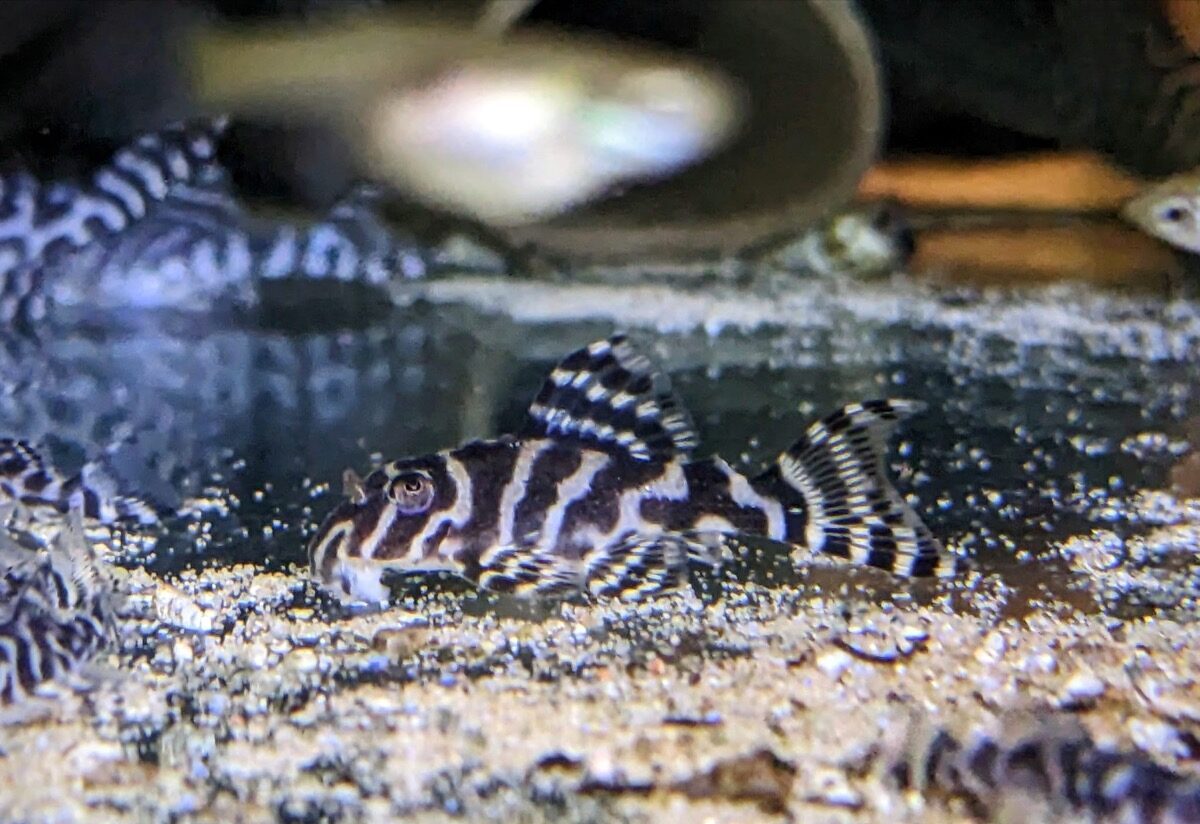Your basket is currently empty!
Breeding L333 Plecos: A Comprehensive Guide
Breeding L333 plecos, also known as King Tiger plecos, can be a rewarding and fascinating experience for aquarists interested in these distinctive catfish. Here’s a step-by-step guide to successfully breeding L333 plecos in your aquarium:
1. Prepare the Breeding Tank:
- Select a dedicated breeding tank with suitable dimensions (at least 20 gallons or larger).
- Ensure the tank has ample hiding spots such as caves or driftwood, as L333 plecos prefer secluded areas for breeding.
- Maintain stable water parameters: slightly acidic to neutral pH (around 6.5-7.5), temperature between 78-82°F (25-28°C), and good water quality with minimal ammonia and nitrite levels.
2. Choose a Breeding Pair:
- Identify a mature and healthy breeding pair of L333 plecos. Males are typically larger and exhibit more bristles on their head and pectoral fins compared to females.
- Introduce the pair into the breeding tank and monitor their behavior. They should exhibit mutual interest and may engage in courtship behaviors.
3. Triggering Spawning:
- Provide varied diet rich in protein to stimulate breeding behavior. Offer foods like high-quality sinking pellets, algae wafers, and occasional live or frozen foods such as bloodworms or brine shrimp.
- Consider adding Indian almond leaves or similar botanicals, as they can mimic natural spawning conditions and provide a substrate for the male to build a nest (if preferred).
4. Nest Building and Spawning:
- Male L333 plecos will typically select a suitable surface (often the underside of a flat surface or cave) and begin cleaning and preparing it for spawning.
- The female will lay eggs, which the male will fertilize and then guard. The male may build a bubble nest to protect the eggs until they hatch, which can take several days depending on water temperature.
5. Caring for Fry:
- After hatching, the fry will initially feed on their yolk sacs. Once they become free-swimming, offer them specialized fry foods such as powdered algae, crushed flakes, or commercial fry food.
- Maintain excellent water quality and consider gentle filtration to prevent fry from being sucked into the filter intake.
- Monitor the fry closely for growth and health, providing frequent small water changes to ensure optimal conditions.
6. Growth and Development:
- As the fry grow, they will begin to resemble miniature versions of adult L333 plecos. Continue to provide a varied diet to support their development.
- Gradually introduce them to the main tank environment once they are large enough to avoid predation from larger fish.
7. Troubleshooting and Tips:
- Be patient, as breeding L333 plecos can take time and multiple attempts.
- Maintain stable water parameters throughout the breeding process to minimize stress and maximize success.
- If breeding attempts are unsuccessful, review tank conditions, diet, and compatibility of the breeding pair.
Breeding L333 plecos requires dedication and attention to detail, but the rewards of successfully raising these unique catfish can be immensely satisfying. Follow these steps and guidelines to enhance your experience and contribute to the conservation of this species within the aquarium hobby.


Leave a Reply